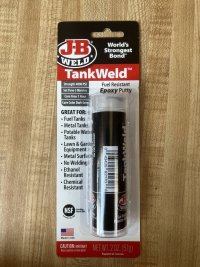So we discovered a very slight leak in our original aluminum diesel tank. Just a bit of seepage in the lowest corner. Fortunately E31s came from the factory with an access port so, I was able to drain the tank, clean it reasonably well, and after some new boat yoga poses, patch it with some JB Weld fuel tank seal. So far so good.
After adding a few gallons of clean fuel, I thought, okay now there will be air in the fuel line, since the pickup tube was empty. But then it occurred to me that the highest point of the fuel pickup line is above the tank and then runs downhill to the primary filter and fuel pump. That fuel has nowhere to go. So I decided to crank the engine and see if any air bubbles would work their way down. Ran it for a total of about 15 minutes and it ran fine.
Have I missed something? Should it run longer to be sure there’s no air before I set off to the haul out yard tomorrow? Would really prefer to not have to bleed it in the middle of the river halfway to my destination.
After adding a few gallons of clean fuel, I thought, okay now there will be air in the fuel line, since the pickup tube was empty. But then it occurred to me that the highest point of the fuel pickup line is above the tank and then runs downhill to the primary filter and fuel pump. That fuel has nowhere to go. So I decided to crank the engine and see if any air bubbles would work their way down. Ran it for a total of about 15 minutes and it ran fine.
Have I missed something? Should it run longer to be sure there’s no air before I set off to the haul out yard tomorrow? Would really prefer to not have to bleed it in the middle of the river halfway to my destination.

